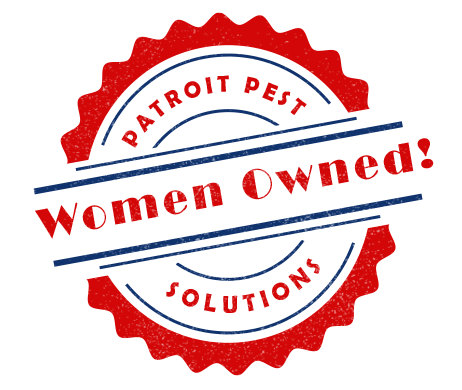Every Pennsylvania homeowner dreads those unmistakable sounds: scratching in the walls, scurrying across the attic, or the telltale rustling of something moving through your kitchen cabinets. When rodents invade your home, they bring more than just unwelcome noise—they pose serious health risks and can cause extensive property damage.
Rodent control isn’t just about setting a few traps and hoping for the best. These persistent creatures require strategic, professional intervention to eliminate current populations and prevent future invasions. At Patriot Pest Solutions, our veteran-owned, women-operated team has spent decades perfecting rodent control methods that protect Pennsylvania families while using environmentally conscious approaches that won’t compromise your household’s safety.
Whether you’re dealing with your first mouse sighting or a full-scale rat invasion, understanding the scope of the problem and knowing when to call professionals can save you time, money, and countless sleepless nights. This comprehensive guide will help you recognize rodent activity, understand the risks, and take decisive action to reclaim your home.
Meet Pennsylvania’s Most Common Rodent Invaders
House Mice: Small but Mighty Troublemakers
House mice may seem harmless due to their tiny 2-4 inch frames, but don’t let their size fool you. These gray-brown invaders can squeeze through openings as small as a dime, making even the most secure homes vulnerable. Female house mice are prolific breeders, producing up to 10 litters annually with 4-8 pups each. Within weeks, a small mouse problem can explode into a major infestation.
These adaptable creatures prefer warm, quiet spaces for nesting. Wall voids, attics, basements, and the areas behind appliances provide perfect hideaways. House mice are also notorious for their curiosity, often investigating new objects in their territory—a trait that makes proper bait placement crucial for effective control.
Norway Rats: The Basement Dwellers
Significantly larger than mice, Norway rats can grow up to 10 inches long with thick, heavy bodies built for burrowing. These ground-level invaders typically enter homes through foundation cracks, gaps around pipes, or damaged vents. Once inside, they establish extensive tunnel systems in basements, crawl spaces, and lower building levels.
Norway rats are excellent swimmers and surprisingly good climbers, allowing them to access homes through unexpected entry points. Their strong teeth can gnaw through wood, plastic, and even soft metals, making them particularly destructive to building materials and stored items.
Roof Rats: The High-Rise Specialists
Also known as black rats, these agile climbers prefer the upper reaches of structures. Roof rats access homes through overhanging tree branches, utility lines, and roof-level openings. They commonly establish nests in attics, false ceilings, and upper wall voids where they remain hidden from daily household activities.
While smaller than Norway rats, roof rats are equally destructive and can be more challenging to detect since they rarely venture to lower levels where homeowners might notice their presence. Their preference for elevated locations often means significant damage occurs before homeowners realize they have a problem.
Recognizing the Warning Signs Before It’s Too Late
Droppings Tell the Story
Rodent droppings are often the first sign homeowners notice, and their appearance can help identify both the type of rodent and the severity of the infestation. Fresh droppings appear dark and moist, while older ones become dry and crumbly. Mouse droppings resemble small grains of rice, typically measuring 1/8 to 1/4 inch long. Rat droppings are larger and capsule-shaped, measuring 1/2 to 3/4 inch in length.
The location of droppings also provides valuable information. Scattered droppings indicate active foraging areas, while concentrated deposits suggest nesting sites nearby. A single mouse can produce up to 80 droppings daily, so even small infestations generate noticeable evidence quickly.
Damage That Goes Beyond Aesthetics
Rodents must continuously gnaw to keep their ever-growing teeth manageable, leading to distinctive damage patterns throughout your home. Fresh gnaw marks appear lighter in color and show clear tooth impressions, while older damage darkens and becomes less defined over time.
Pay particular attention to electrical wires, as rodent damage can create serious fire hazards. Chewed food packaging, wooden structures, and plastic materials also indicate active rodent populations. The cost of repairing this damage often exceeds the investment in professional rodent control services.
Nests Reveal Hidden Populations
Rodents are resourceful nest builders, collecting soft materials from throughout your home. Shredded paper, fabric scraps, insulation, and dried plant matter disappear as rodents gather supplies for their hidden colonies. These nests are typically located in quiet, undisturbed areas like storage boxes, behind appliances, and within wall cavities.
Finding nesting materials doesn’t just confirm rodent presence—it often indicates breeding populations that require immediate professional intervention to prevent exponential growth.
Traffic Patterns Become Visible
Established rodent pathways develop into visible dark, greasy smudges along walls and baseboards. These runways form as rodents repeatedly travel the same routes between nesting areas and food sources. In dusty areas, you may notice small footprints or tail drag marks that clearly show regular rodent traffic.
Understanding these movement patterns helps pest control professionals determine the most effective placement for traps and exclusion materials, making professional intervention significantly more successful than random trap placement.
The Hidden Health Dangers Lurking in Your Home
Disease Transmission Risks
Rodents can transmit over 35 diseases to humans through direct contact, contaminated food, or infected parasites. These health risks make swift professional intervention essential for protecting your family’s wellbeing.
Salmonellosis occurs when rodents contaminate food preparation surfaces with bacteria from their droppings and urine. Hantavirus, transmitted through airborne particles from dried rodent waste, can cause severe respiratory illness. Leptospirosis spreads through contact with infected urine, while rat-bite fever can result from bites, scratches, or handling contaminated materials.
Lymphocytic choriomeningitis virus spreads through dust contamination and can cause serious neurological complications. The presence of any rodent infestation significantly increases your family’s exposure to these dangerous pathogens.
Food Contamination Nightmares
Food contamination represents one of the most immediate threats from rodent infestations. Mice and rats don’t just eat your food—they contaminate it with urine, droppings, and hair as they explore your kitchen and pantry areas. This contamination can occur even in sealed packaging, as rodents easily chew through cardboard, paper, and thin plastic containers.
The economic impact extends beyond replacing contaminated food items. Cross-contamination affects surfaces, utensils, and appliances throughout your kitchen, requiring extensive cleaning and potentially replacement of damaged items.
Why Professional Intervention Makes the Difference
Comprehensive Inspection and Assessment
Professional rodent control begins with thorough property inspection to identify entry points, nesting areas, and the full scope of the infestation. Trained technicians recognize subtle signs that homeowners often miss, such as rub marks, gnaw patterns, and pheromone trails that indicate rodent highways throughout your property.
This comprehensive assessment allows for targeted treatment strategies rather than the hit-or-miss approach of DIY solutions. Professional inspection also identifies structural vulnerabilities that require attention to prevent future infestations.
Strategic Exclusion Methods
Effective rodent control focuses heavily on exclusion—sealing entry points to prevent new rodents from entering your home. This requires understanding rodent behavior, identifying potential access points, and using appropriate materials that rodents cannot easily breach.
Professional exclusion goes beyond stuffing steel wool into obvious holes. It involves comprehensive sealing of foundation cracks, gaps around utilities, damaged vents, and countless other potential entry points that only trained eyes can identify and properly address.
Safe and Effective Treatment Options
Professional pest control companies have access to treatment methods and materials not available to consumers. These professional-grade solutions provide faster, more effective results while maintaining safety standards for your family and pets.
Professional treatment also includes ongoing monitoring and adjustment of strategies based on rodent response and environmental factors. This adaptive approach ensures long-term success rather than temporary relief.
Prevention Strategies That Actually Work
Sanitation and Food Storage
Proper sanitation eliminates the food sources that attract rodents to your property. Store all food items in rodent-proof containers made of glass, metal, or thick plastic with tight-fitting lids. Clean up crumbs and spills immediately, and avoid leaving pet food accessible overnight.
Regular cleaning of storage areas, basements, and attics removes potential nesting materials and eliminates odors that attract rodents. Pay particular attention to areas behind appliances and in corners where debris tends to accumulate.
Structural Modifications
Trim tree branches and shrubs away from your home’s exterior to eliminate bridges that provide roof access for climbing rodents. Maintain clear spaces around your foundation to reduce hiding spots and make rodent activity more visible.
Install door sweeps, repair damaged screens, and seal gaps around windows and doors. These modifications create barriers that significantly reduce rodent access to your home’s interior spaces.
Ongoing Monitoring
Regular monitoring allows early detection of new rodent activity before minor issues become major infestations. Professional pest control services include routine inspections that identify emerging problems and address them promptly.
Monitoring also helps evaluate the effectiveness of prevention measures and allows for adjustments based on seasonal changes and evolving conditions around your property.
When to Call Patriot Pest Solutions
Signs That Demand Professional Attention
Contact professional pest control services immediately if you discover multiple droppings, active gnaw damage, or evidence of nesting materials. Don’t wait for the problem to worsen—early intervention prevents minor issues from becoming costly major infestations.
If you hear scratching sounds in walls or ceilings, especially at night when rodents are most active, professional inspection can determine the extent of the problem and implement appropriate solutions before structural damage occurs.
Our Proven Approach
At Patriot Pest Solutions, our veteran-owned team combines over 50 years of experience with environmentally conscious methods that protect your family while eliminating rodent populations. Our Associate Certified Entomologist develops customized treatment plans based on your specific situation and property characteristics.
We provide comprehensive solutions that address current infestations while implementing prevention strategies to protect your home long-term. Our approach focuses on education, helping you understand the steps necessary to maintain a rodent-free environment.
Service Areas We Protect
Our experienced team serves Pennsylvania communities throughout Montgomery County, Chester County, Delaware County, Berks County, Bucks County, and Philadelphia. We understand the unique challenges that Pennsylvania homeowners face and tailor our services to address regional rodent behavior patterns and seasonal activity cycles.
Take Action Before Rodents Take Over
Rodent infestations don’t improve on their own—they only get worse with time. Every day you delay professional intervention allows rodent populations to grow exponentially while increasing health risks and property damage. The investment in professional rodent control pays for itself through prevented damage, protected health, and restored peace of mind.
Don’t let rodents compromise your family’s safety and comfort. Contact Patriot Pest Solutions today at (610) 489-5136 for a free estimate and take the first step toward reclaiming your home from unwanted invaders. Our experienced team is ready to develop a customized solution that eliminates current problems and prevents future infestations




